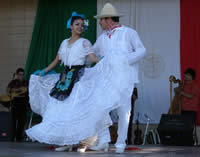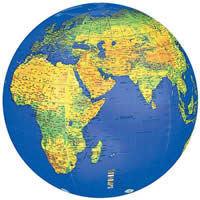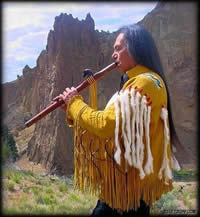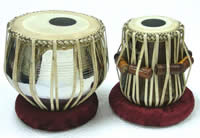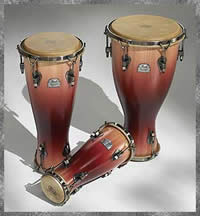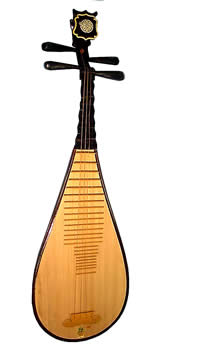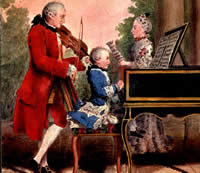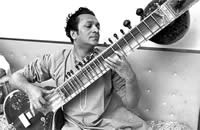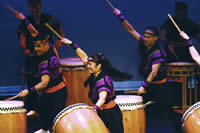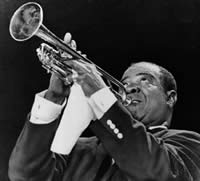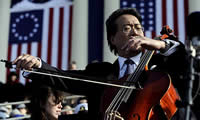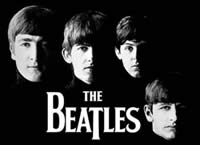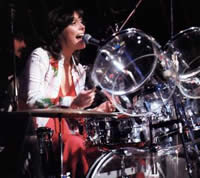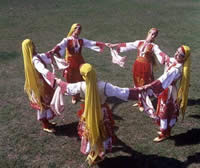Course Information Overview
- (10059) meets Friday 11:00-13:50
- Room- Cypress Hall 217
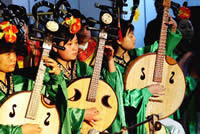
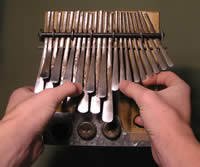
Course Description
This class covers selected world music areas, repertoires, instruments, and cultures around the globe and the lived values and complex meanings behind musical performance, composition, and creative artists. Designed as an intensive active learning workshop, we will be combining the approaches of ethnomusicology, composition, master class performance, and western music theory in order to explore how musical sounds are shaped, arranged, represented, and composed by their diverse makers worldwide. Cultural areas, regions, nations, and musics include: Iranian sung poetry, Indonesian gamelan, Afro-Cuban son and batá drumming, Puerto Rican salsa, Mexican-American mariachi and ranchera artists, Spanish flamenco guitar, south Indian Classical music, central African polyphony, Chinese local opera, Hopi kachina songs, Mozart Piano Concerto No. 17 in G Major, La Nozze di Figarro, and Elliot Carter’s Enchanted Pieces. Studying diverse works that exist in written scores and in aural tradition, Understanding World Cultures Through Music is designed to provide general students, performing and computer musicians, and amateur composers with the creative skills, vocabulary, and musical theory needed not only to appreciate and comprehend multicultural musics but also prepare students with the critical thinking necessary to contemplate the broader ethical, ideological, border issues and postcolonial dilemmas inherent in global music studies. Through in-class performance, concert/recital attendance, original composition, lectures, videos, music theory and reading assignments, written reports, exams, and intensive academic study, this course aims to enable students with creative elements to be used in digital, acoustic, and multimedia compositions as well as active learning, world music performance, and academic research.
Course Prerequisites
Completion of the lower division writing requirement.
Understanding World Culture through Music will rely on and utilize the universitie's newest classroom technology. Students must sign up for moodle and set up online class profile: Moodle http://moodle.csun.edu. If you have never used this technology, see http://docs.moodle.org to access moodle and to learn how to navigate this program. Students should check grades, announcements, chat-rooms, forums, events, links, quizzes, and study guides which will be posted weekly on Moodle. If you have any problems, see the CSUN moodle web site for suppporting documentation and other resources. Please read Peter Garcia's entire web page and online syllabus beforehand and read the CSUN Student Conduct Code and Academic Policy before the second week of class.
Student Learning Objectives
Course Objectives
1. This course encourages students to explore a variety of world music recordings, performances, concerts, and experiences. Student attendance of world music concerts, live performances, music department recitals and/or dances is required in order to develop a sense of individual responsibility in supporting human creativity and encouraging diverse, ethnic, and avant-garde modes of expression. Support of the arts occurs from within the campus, the greater community, and the music department; however, this course is offered to all musicians, but especially to students, who according to Michael Tenzer, "need models for resisting pressure to identify themselves exclusively as one kind of musician or other" (4).
Assessment: Students prepare two 2 page single spaced written critiques discussing the hype, price, quality, and audience participation. Students learn aesthetic criticism and artistic concepts in readings and class lectures that provides them with the necessary theories, critical understanding, and basic vocabulary by which to evaluate and critique world music performance.
2. For Michael Tenzer, mishearing can be as creatively productive as intensive engagement, and it is unwise to argue for one or the other approach. One of the aims of this critical reading course is to enhance your literary and technological enthusiasm with an assortment of academic perspectives on a variety of world music areas, artists, and topics. Students make individual and group in-class presentations over assigned literature and/or participate in small group creative projects while studying the role of culture in world musics. These creative activities provide students with excellent opportunities to develop leadership and critical thinking within the classroom. Performance and composition encourages students to develop creativity through participating in group presentations and projects. In addition to reimagining the domain of analysis as something that is not positioned in terms of a Western/non-Western split, this course assumes that analyst and composer are two interacting sides of each musical self. Tenzer, "It is addressed equally to the composer in each of us and takes a proactive stance against the way Western music education channels students to choose among identities such as composer, theorist, musicologist, performer, and so on." The books, assignments, creative projects, and musicianship presented in MUS310 may potentially contribute to future fusions and life-changing transformations. In this way, knowledge of musical structures, composition, styles, and performance in a variety of musics is necessary for the contemporary musician.
According to Michael Tenzer, Humans are biologically predisposed to making music and it played an important role in human evolution. Correspondingly, it is music's nature to fuse, recombine, and proliferate like genes. Musicians and composers, witting or unwitting, acting independently or constrained by beliefs and institutions, are the matchmakers in these reproductive sonic trysts. Music fusion is inexorable and something of an advance guard for actural genetic fusion: no human intolerance nor any reservations about propriety stopped Spanish melodies from eloping with West African rhythms to form rumba in racist, socially segregated, late-nineteenth-century Havana. One of ethnomusicology's most enduring contributions has been to show that such weddings take place whether the cultural parents approve of them or not (especially when they don't, it seems), and that they both prefigure and catalyze broad social changes (17).
Assessment: With the diverse range of artistic talent and musical experience within a single class, participation in creative projects is given full credit with the academic scrutiny and evaluation taking place within the classroom environment and from the student audience. The “masterclass” immediately follows a musical performance or composition. Here students provide constructive criticism and assessment as well as compliments, kudos, and applause. The works are discussed in terms of aesthetics, world musical materials, emotional content and impact, rehearsal preparation and final presentation, enthusiasm and performance ability, and musical exceptionalism.
Michael Tenzer believes that in the recent past, "new music" had a special niche in Western culture in terms of its complex range of tonalities (or atonalities), the radical contextuality of each work, instrumental virtuosity, alliance with computer research and technology, and the prestige of certain eduational and performing institutions. That scene's exclusive and faithful core audience is no longer exclusive nor faithful. This reflects the composers, who are off exploring and have subverted everything that new music used to stand for, including and especially merging it with popular musics. But new music is best seen neither as the pedigree descedant of the Western tradition nor the constantly renewing product of the music industry; it is nothing if not equivalent to world music in its prismatic and hybridizing forms. Conservatory trained composers in Seoul work out their ideas on Korean drums and present them as a performer's collective, or in collaboration with Austrian Jazz players. The Bang On a Can ensemble, fronted by their guest Burmese musician Kyaw Kyaw Nang, performs transcriptions of his traditional repertoire in New York. Of the best musical minds of our time, it can safely be said that only a few of them are writing symphonies (19).
3. Students read current scholarship devoted to understanding world culture through music in the expression of ethnicity, class, gender, sexuality, spirituality, identity, and nationalism among the diasporic and diverse communities throughout the globe. From reading assignments, students learn various aesthetic/cultural and world music concepts, values, artistic styles, performers, composers, and playwrights, forms, and genres.
Assessment: Students are expected to use theory and language learned in readings and media assignments in written reports and in class discussions and artistic masterclasses.Likewise, students are assigned listening guides and case studies involving music transcription as a means of developing listening skills intended for world music analysis. According to Michael Tenzer, "It is given that analysis --whether based on focused interior listening, working with a composer's score, or by making one's own transcription--is a worthy exercise because it brings us to a more intensive relationship with the particularities of sound. What arises next is the question of how we interpret and present our perceptions and decisions" (8).
Grading
(1) Individual or group final research paper including interview and/or score/listening analysis or visual representation/description of music or (2) World music digital or acoustic composition with score analysis/transcription and in class power point presentation or (3) World Music solo or ensemble in-class performance including power point presentation and short paper 25%
(4) Weekly music area quizzes (5 points each) 50% plus 5 points extra credit.
(5) Two brief world music concert reports with proof of attendance (5 points each) 10%
(6) Completion of 20 exercises in Music Theory for Computer Musicians (each chapter is worth .5 points with the last four chapters 21-25 worth 1 point each for a total of 15 points possible or 5 points extra credit) 10%. Music theory assignments are due weekly and no late assignments will be accepted.
(7) Listening Guide Transcription w/Précis or Transcription/Literature Discussion or Drumming Circle Leadership 5%
(8) Participation, Attitude, and Attendance are also factored into final grade. Excessive absences, leaving early, tardiness will be severely counted against offenders.
1. Research papers must be at-least 2,500 words (8-12 pages) including transcription/musical score analysis in order to earn a passing grade in this class. In order to earn the highest mark on your final project-you should plan on interviewing a musician or musical expert for your research paper. The interview should provide insight directly relevant to your topic and substantial quotes from the interview must be present in your paper. An “A” quality research paper must also have a thesis that states a proposition that is then explored via research and presented in class. Your essay should also begin with an introduction describing the topic, why you chose it, and stating your specific thesis. The paper should also explain specific musical qualities, sound characteristics, and stylistic attributes via western music theory and/or ethnotheory and provide a visual score or transcriptions illustrating important musical details, acoustic features, or performance points. The paper should end with a conclusion that revisits the original thesis, reflects upon what you learned via the research about the connection between music and culture and how the experience has impacted or altered your views and changed you or your group as people. A bibliography will be provided showing that a variety of sources including your textbooks with at least 5 encyclopedias, books, and articles were used. Your paper must also use materials such as quotes, theory, ideas from your course textbooks and articles. Be sure to critique any internet or online sources regarding accuracy, reliability, and who posted material and for what purpose.
2. World Music digital solo or ensemble composition, score analysis, and in class presentation includes an original creative project using a variety of audio materials studied in class including scales, rhythms, forms, timbres, instruments, and so on. Students may use Composing Digital Music for Dummies as a step-by-step guide to writing, arranging, and publishing your own digital music compositions. Students must provide either a descriptive or prescriptive score/transcription including a brief 1,500 word (4 to 6 pages) written report explaining the composition, creative process, and the various world musical materials used throughout. Your essay should also begin with an introduction describing the topic, why you chose it, and stating your specific thesis. The paper should also explain specific musical qualities, sound characteristics, and stylistic attributes via western music theory and ethnotheory and possibly provide a visual score illustrating important musical details, acoustic features, or performance points. The paper should end with a conclusion that revisits the original thesis, reflects upon what you learned via the research about the connection between music and culture and how the experience has impacted or altered your views and changed you or your group as people. A bibliography will be provided showing that a variety of sources including your textbooks with at least 3 encyclopedias, books, and articles were used. Your composition may be performed using computer software or recording technology (mymusic.com or CD) and may use acoustic or electronic instruments, or voice(s). Your paper must also use material including quotes, theory, and musical ideas from your textbooks and articles. Be sure and critique any internet or online sources regarding accuracy, reliability, and who posted material and for what purpose.
3. World Music Performance of either a solo or ensemble piece with presentation explaining the musical area, vocal and instrument techniques, form, genre, composition, stylistic requirements and meaning(s) of the song or instrumental composition. A brief 1,500 (4 to 6 pages) written report providing a brief overview of the musical areas or genre and materials featured in the song or instrumental piece performed. Your essay should also begin with an introduction describing the topic, why you chose it, and stating your specific thesis. The paper should also explain specific musical qualities, sound characteristics, and stylistic attributes via western music theory and ethnotheory and possibly provide a visual score illustrating important musical details, acoustic features, or performance points. The paper should end with a conclusion that revisits the original thesis, reflects upon what you learned via the research about the connection between music and culture and how the experience has impacted or altered your views and changed you or your group as people. A bibliography will be provided showing that a variety of sources including your textbooks with at least 3 encyclopedias, books, and articles were used. Your paper must also use material including quotes, theory, and musical ideas from your textbooks and articles. Be sure and critique any internet or online sources regarding accuracy, reliability, and who posted material and for what purpose.
4. Exams: In lieu of a comprehensive midterm/final exam covering enormous amounts of information and musical material, weekly quizzes will be given with multiple choice and music theory questions and/or musical listening examples from your text books, CD recordings, and assigned readings which will be taken in-class on-line. Your study guides, reading assignments, cd examples, and music theory will be the primary basis of your exams. Please bring a laptop or a internet device such as an i-phone or blackberry to class or make arrangemetns to use the music computer lab.You only need to complete 10 quizzes (5 points each) to earn a minimum of 50 points total out of the 12 meaning you can miss or fail one of the quizzes and make up the missed points with the additional quizzes. Quizzes will begin immediately at 10:55am as an incentive to arrive early and you will have approximately ten to fifteen minutes tops to complete the assignment. If you are going to be absent and you wish to take the quiz outside of class, be sure to communicate with me and let me know beforehand. Othewise, you will not receive credit for a quiz taken outside of class.
5. Two written concert reports are required for the course. Reports are due anytime before and no later than weeks 7 and 13. Late reports will not be accepted for any reason. Please plan ahead! Concert reports will be two pages double spaced with five complete paragraphs in length (following standard essay form: introduction, development, and conclusion) and consist of four parts: 1) a synopsis of the concert and its music, musicians, and instruments 2) a personal reflection on the concert describing the most important points you learned about the connection between music and culture 3) a quote or paraphrase from reading assignments related to the performance you attend showing what you have read 4) proof of attendance such as an e-ticket, flyer, program, or photograph must be attached to your on-line report or you may turn in a hard copy with your name for credit. IF YOU HAVE ANY DOUBTS AS TO THE ACCEPTABILITY OF A PERFORMANCE, PLEASE CHECK WITH ME FIRST.
6. Hewitt Music Theory for Computer Musicians 20/25 exercises are worth 10 points, complete all 25 exercises for a total of 15 points or 5 points extra credit. The exercises are provided on e-reserve and may be downloaded. Please write legibly and copy keyboard and notation exercises clearly. Music theory assignments are due on a weekly basis and we will cover music theory and musicianship during the second hour of class. The answer keys are available online and students should correct their own papers before handing them in for credit but to get the most out of this class, please attempt the homework assignments first rather than simply copying the answers. You will be asked to know and perform this material on exams so it behooves you to actually learn it as it also opens up an entirely different portal to understanding world cultures through music. If you need help with music theory- I suggest you form groups and complete your assignments collectively or come by office hours.
7. In Class Music Transcriptions/Listening Guide Presentations/Précis: According to Michael Tenzer, In a discussion of transcription from recordings or performances (itself a very important kind of analysis since the act of notating music requires deciding how to respresent virtually all music elements), ethnomusicologist Ter Ellingson wrote definitively that "one goal of transcription is the experience of transcription itself" (. . .). It is a given that analysis--based on focused interior listening, working with a composer's score, or by making one's own transcription--is a worthy exercise because it brings us to a more intensive relationship with the particularities of sound. What arises next is the question of how we interpret and present our perceptions and decisions (Analytical Studies in World Music 2006, 8).
For each class meeting, students will present a visual representation or musical transcription based on the listening guides in Excursions in World Music or a portion of the musical transcription found in the assigned readings in Analytical Studies in World Music and other articles including drum circle textbook Kallani Together in Rhythm. On the day of the presentation students will have selected a listening guide from Excursions in World Music or a musical case study from Analytical Studies in World Music or another assigned reading from the syllabus. Students will prepare a no more than a half-page (typed and single spaced) précis for the selected reading assignment explaining the listening guide, musical transcription, or visual representation of assigned music example. The Drum Circle also requires a presentation covering philosophy, health benefits and spiritual dimensions, and values and approach to and types of drum circles. If you wish to learn how to lead the class in a drum circle please sign up.
Students must explain the portion of the readings that helps us better understand and analyze the listening guides and/or musical transcription with a brief precís or annotated overview of the musical example(s) from the article, chapter, or essay. Early in the semester, students should have read the entire syllabus and made their initial preferential listening guide or case study selections. After deciding which listening guides or reading assignments you hope to present, email me at least two or three specific world music choices. Students will be signed up as Listening Guide and Transcription/Discussion leaders and proceed with preparations for your assignment on the designated days. Assignments will be assigned on a first come first serve basis and we will try to have at least 3 or 4 presentations per class.
Students should prepare a 5 to 6 slide powerpoint presentation to be used while leading the class in group discussion over the Listening Guide or Transcription assignment which may also be posted on Moodle later. Please label the file with the world area you are presenting (i.e. Latin America, China, Ethnic North Amerca, Indonesia) and your last name and student identification number. The first slide should include your name, class information and the full citation of the article or chapter you are presenting and the musical title, performers, and additional information regarding the listening guide or transcription you are presenting. Title (in quotes), author's name, and book or volume title (italicized) should all be centered. The second slide should include your brief precís demonstrating your critical reading skill in creatively synthesizing the scholarly articles or book chapters into abstract annotations with an overview of the musical transcription or listening guide you are presenting.
The remaining slides should present the original listening guide and musical transcription either scanned or copied with notes explaining vocabulary, illustrating important music concepts, or reviewing various theories used in the scholarly analysis of the specific selections you are presenting. In some readings like the Excursions in World Music - you may wish to focus only on the important case study or musical selection by either integrating western music theory and notation into your discussion or devising original and alternative visual representations of the musical concepts or ideas you wish to emphasize in your analysis. You may be as creative or scientific as you like. You should play the musical example (either the entire selection of important portions which your work highlights) and walk the class through the transcription or listening guide explaining how you approached the assignment and what musical elements you were able to illustrate visually (i.e. form, timbre, rhythm, meter, tempo, melody, harmony, style, gender, class, text-setting, raga, mode, ensemble, dynamics, or other compositional features). If you are able to use western notation or music theory, please do so but you will not lose points if you use alternative representations and/or original notations. You will be graded on process and even if your transcription is not exact or intended for performance (prescriptive transcription) you will receive full credit for descriptive transcription that illustrates one or more musical features or compositional qualities of your selection. Your presentation might also include important internet links, photos, audio footage, youtube, or additional media and cool video files that are related to the case studies or that help illustrate the musical forms you are presenting.
Your final slide may address some of the discussion and study questions provided in the syllabus or show how your transcription/listening guide helps us understand world cultures through music. You may also present new questions for class discussion covering challenges of transcription of non-western musics and the benefits or shortcomings of western music theory in analysis of non-western musics. Some of the articles are best prepared as primary listening assignments either analyzing musical examples or viewing online performances discussed in the literature. Your presentation should include at least 5 to 10 minutes of presentation including the accompanying CD recordings or a portion of the selection, examples found on youtube, photographs, musical, ritual, and/or dance works, or live performance/demonstration and a couple of minutes of class discussion and some critical evaluation of the lesson. All students are expected to have read the materials (2 or 3 articles or chapters per week) and be prepared with notes to discuss all or most of the reading assignments.
You should take notes on all reading assignments including the listening guides and transcriptions and are encouraged to ask additional questions and/or seek clarification on material that is covered from instructor's lectures or the individual music transcription/listening guide presentations. Constructive criticism and a mutual respect and professionalism is always expected especially in evaluating each other's creative work and scholarly presentations.
As serious academic writers, you will have to read and remember large amounts of literature along with transdisciplinary, humanities, history, and social-studies articles. In many of your undergraduate courses, you are probably able to memorize obvious facts and important key statements with relative ease. However, undergraduate honors seminars and upper-division transdisciplinary courses such as MUS310 also require closer critical reading. In this class, you are asked to go a step further, i.e., to present the informing argument of articles and entire books and to reproduce the logical development of the arguments in as cogent a form as possible in your own words. In order to demonstrate that you have assimilated the central argument and proof of another scholar's critical interpretation, you must be able to summarize and even compose a précis of an argument.
Students may cite particularly relevant, memorable, or meaningful passages from your assigned music transcription or case study. This passage represents the center from which the issues that concern your group emanate. These passages may be aesthetic, analytical, ethical, political, gendered, methodological, subjective, or theoretical depending on the topic or material covered. Next, in an essay-style paragraph or two, very briefly articulate your concerns and how the music transcriptions, listening guides, and case studies relate to your ongoing UNDERSTANDING of WORLD CULTURES THROUGH MUSIC. Finally, pose several questions that these concerns raise regarding the author(s), articles, approaches, or methodologies from your assigned reading. Provide definitions of important vocabulary and key concepts, critical terms and ideas that will likely come up on exams. The point of this exercise is to develop your critical reading and thinking skills in analyzing literature and synthesizing the broader issues into meaningful discussions with your peers including an abstraction or précis and presentation for each article. ALL students are expected to read the materials covered on a particular day prior to coming to class.
8. The questions you may raise during your presentations are for discussion and debate among the entire class, but they are not necessarily intended for the students to answer for you. If there are concepts or information that you do not understand, chances are that others in the class may also be confused. Please come by office hours of feel free to phone or email me beforehand for help so that your in-class presentations are polished and your group is confident in your pedagogy and content. Since questions raised are important to your selection, we expect that you will have already come up with some preliminary answers for yourself but encourage the class to discuss issues and analysis. Students should be prepared to explain your conceptualization and formulation of issues particularly in relation to world music and cultural applications. In addition to why you think these issues/questions are important for the broader world music study, we are also mostly interested in your processes for answering them.
9. Good class attendance, participation, and attitude are a critical part of the learning experience. Attendance and participation count towards your grade. Each absence beyond any three hours of class will lower the final grade by 3 points. Two tardies shall be counted as one absence.
Extra Credit- Hewitt Music Theory for Computer Musicians 20/25 exercises are worth 10 points, complete all 25 exercises for a total of 15 points. Ethnic pot lock meal also offers 4 points for anything cooked, 3 points for store bought food, plates, cups, cutlery, and 2 points for clean up.
Final Project Details
Research, digital composition, and in-class performances will be submitted in five installments. Late installments will not be accepted for any reason. If you can’t make it to class the day of a deadline, you may submit your assignment via email or U.S. mail postmarked on or before the deadline (see address under section d).
1. No later than the end of week 4, students will submit the introduction of the paper proposing an individual or group research project, world music composition, or world music performance (including title). Introduction should be approximately one page in length. The thesis should be stated in bold print at the end of the introduction. Worth 15% of overall project.
2. At the end of week 8, students will submit the background research section of the research paper, digital composition, or world music performance. The paper should serve as the basis of your final presentation addressing information paraphrased or quoted from sources. References/bibliography should be included with at least 3 to 5 different sources depending on your project including your textbooks and specific case studies, and chapters covering world music areas you are interested in researching. If you take ideas from a source and either quote them directly or put them into your own words (paraphrase) you must cite the source. Otherwise, you are guilty of plagiarism (see Appendix E-2 Academic Dishonesty of the CSUN 2009-2010 Catalog). Background section should be approximately 5 pages in length. Worth 25%.
3. At the end of week 11, students may submit an interview/analysis and/or transcription/listening guide section of the research paper, descriptive/prescriptive score of digital composition, or musical text/translation or listening guide for world music performance. The interview should not be in a question and answer format but should rather be framed by commentary, criticism, and analysis by the student. Interview/analysis section should be approximately 1-2 pages in length and include substantial quotes from readings directly related to the thesis of the paper. Worth 15%.
4. At the end of week 14, students will submit the entire paper, including title page, introduction, background and analysis, interview, digital composition, world music performance analysis, conclusion, reflection, and references. Worth 25%. Failure to turn in the complete research paper at the end of the 14th week will result in a failing grade for the class- no exceptions. Mail to: Peter Garcia Department of Chicana/o Studies 18111 Nordhoff Street Northridge, California 91330.
5. A portion of the class sessions during weeks 14 and 15 shall be designated as in-class presentations of digital compositions and world music performances. Individual students and groups may have up to 15 minutes to present, perform, and explain your creative projects. Students will provide written comments and constructive criticism evaluating the presentations, compositions, and performances and determine a written score assessing the effort, delivery, topic, and overall project. Comments will be submitted to instructor and will be used in the overall evaluation which will then be forwarded to students at the final exam.
Course Schedule
Week One August 27, 2010 Introduction to the Course.
11:00-11:50 Getting Acquainted (ice breaker), Introduction to concepts and academic background from ethnomusicology and World Music studies. Review of texts and CDs.
In Class Group Reading Assignment (on e-reserve) Guillermo Gómez-Peña “Culturas-In-Extremis: Performing against the Cultural Backdrop of the Mainstream Bizarre” Pp. 287-298 in The Performance Studies Reader edited by Henry Bial Routledge (2004).We will break out into small groups with each providing a review/summary and critique of the various tracks. What is the point Gómez-Peña is making in each track and how does it help us in our understanding of world cultures through music or performance?
Track #1: Uroboro: the spectacle of the mainstream bizarre
Track #2: The Illusion of Talking Back
Track #3: The Finisecular Freak crosses the Southern Border
Track #4: "Extreme Sexuality" and other extremely hollow concepts
Track #5: Altered bodies and wounded bodies
Track #6: Collectible Primitives in the great international expo
Track #7: Performing the Other-as-freak
12:00-12:50 Sight Read: Please download and bring to class- Bunch a Rhythms handout and Jim Soloman's The Body Rondo Book we will be sightreading: "Alpha Four" (available on e-reserve).
Read -Michael Hewitt Music Theory for Computer Musicians Chapter 1 Musical Sound -download and bring to class. We will complete exercises on page 13 in class and cover the features of this textbook, CD, and online resources.
Listen: Hewitt Music Theory for Computer Musicians CD # 1-5 (see page 291-292).
Listen/Score Studies: Download Aaron Copland’s Fanfare for the Common Man; Tchaikovsky’s “Waltz of the Flores” from Nutcracker Suite; and Loreena McKennitt’s “Marco Polo” from The Book of Secrets (on e-reserve in Oviatt Library)
1:00-1:50 “Amadeus”
Week Two September 3, 2010 Introduction to Musics of the World’s Cultures.
11:00-11:50 Read: Introductions: Nettl, "Studying Musics of the World’s Cultures" in Excursions in World Music.
Study Tips: "Notes on the Marriage of Figaro" -1. aria, recitative, chorus, trio, quartet, overture, and other ensembles. . . 2. main character, story, setting, libretto 3. what does this opera reveal about the composer, audience, and the relationship between music, language, and spoken word? 4. what does it reveal about Mozart’s status as genius composer and academic music making? Universals, Instrumental Classifications, Merriam’s 3 part model, Relativism
Read: Tenzer "Analysis, Categorization, and Theory of Musics of the World" Pp. 3-38 in Analytical Studies in World Music.
Study Tips: Periodicity—forms, styles, types, Isoperiodicity- Overlaps, Exchanges, and Contingencies, Relativism, Transcription. Activism- promotion of a relevant and timely musicianship
12:00-12:50 Submit Michael Hewitt Music Theory for Computer Musicians Chapter 2 The Notes download and complete exercises on page 25 and Chapter 3 The Major Scale download and complete exercises on page 36 (worth one point).
Listen: Hewitt Music Theory for Computer Musicians CD # 6 (see page 292).
Sight Read: –download Solomon's "Alpha Six" rondo.
1:00-1:50 finish “Amadeus”.
Week Three Music-Cultures of Europe
11:00-11:55 Pre-quiz (for practice purposes only) covering Introduction to Nettl "Studying Musics of the World's Cultures" in Excursions in World Music and Tenzer's "Analysis, Categorization, and Theory of Musics of the World" in Analytical Studies in World Music. Powerpoint and lectures notes will be posted on Moodle on a weekly basis.
Due: submit introduction to research paper, composition, or performance (including title).
Read: Bohlman, Chapter 8 "The Musical Culture of Europe" in Excursions in World Music.
Listening Guide Leaders:
"Spanish Work Song: 'La Trilla'" (p. 231 CD II, 19):
"Das Wiener Fiakerlied" ('The Viennese Coachman's Song') composed by Gustav Pick (p. 233-234 CD II, 20):
"Khused" (Chassidic Dance), Performed by Gheorghe Covaci, Sr., and Gheorghe Covaci, Jr. (p. 237 CD II, 21):
"The Owl Woman's Ballad" (Kati Szvorák, singer, and Ferenc Kiss, Jew's Harp) (p. 240 CD II, 22):
Béla Bartók, "Two Duos from the 44 Violin Duos- "Lullaby" and "Dance from Maramoros" Performed by Andrea F. Bohlman and Benhamin H. Bohlman (p. 241 CD II, 23):
"Black Is" performed byyAnish (Ned Folkerth, Aileen Dillane, Kevin Moran, Aidan O'Toole, Brendan Bulger) (p. 244 CD II 24):
"Steirischer Mit Gestanzin" ("Dance from Syria, with Stanzas") performed by Die Tanzgeiger ("The Dance Fiddlers") (p. 248 CD III, 1):
"Tzarina Milica und Duke Vladeta," Boro Roganovic, Gusle Player (p. 251 CD 111, 2):
Baroque Period 1600-1750
Classical Period 1750-1829
Romantic Period 1815-1910
Modern Period 1910-1980
Study Tips: Master Composers: Bach (1685-1750), Mozart (1756-1791), Haydn (1732-1809), Beethoven (1770-1826), Brahms (1833-1897), Schubert (1797-1828), Mendehlsson (1809-1847) Mahler (1860-1911), Strauss (1864-1949), Schoenberg (1874-1951); Musical canon and masterpieces (Vienna’s core) and periphery (Andean panpipes, Gypsy flamenco, Bohemian folk, Spanish/Italian Work songs); volk or folk music- history, nationalism, musical hierarchies and influence on serious art music; art music- academic or high art? opera, symphony, chamber music, Eurovision song contest- popular music/mass culture, Abba, Riverdance, Celine Dion. . . Britain’s Got Talent, European Idol, Journey to Jerusalem
Read: Buchanan and Folse Chapter 2 "How to Spin a Good Horo: Melody, Mode, and Musicianship in the Composition of Bulgarian Dance Tunes" in Analytical Studies in World Music.
Transcription/Discussion Leaders:
Listen: Analytical Studies in World Music CD #3 "Unamed dance Song"; #4 "Georgi le, lyubile".
Study Tips: Did musicians have a compositional model in mind when they improvised such pieces? How did they know what to play? Was there a particular structural form or format plan that they followed? Did musicians of different generations and training approach Horo composition differently? Did national literacy affect horo structure and content? Were the compositional techniques employed by musicians identical despite their choice of instrument? Horo categories and types, song model structures, microtones, Aeolian, Dorian, Phrygian, and Mixolydian modes. Tonal centers and changing meters.
Read: Manuel Chapter 3 "Flamenco in Focus: An Analysis of a Performance of Soleares" in Analytical Studies in World Music.
Transcription/Discussion Leaders:
Listen: Analytical Studies in World Music CD #5 "A Quién le Cantaré Yo"
Study Tips: Gitano (gypsy, Bohemian) flamenco, Andalucian cadence/Phrygian mode, Middle eastern influences and effects of commercialization, Spanish forms: copla, romance, decíma, toque, baile, cantes (palos), compas, malagueñas, fandangos, cante jondo, soleares, and siguiry, rasgueado.
12:00-12:50 Read Hewitt Chapter 4 Rhythm, Tempo, and Note Lengths complete exercises on page 49; Chapter 5 Score Editing complete exercises on page 60 (worth one point).
Listen: Hewitt Music Theory for Computer Musicians CD # 7-10 (see page 292).
Sight Read: download Solomon's "Alpha Three".
1:00- 1:50 Roots of Rhythm Part One
Week Four: September 17, 2010 Music-Cutlures of the Middle East
11:00-11:15 Quiz One: Bohlman, Chapter 8 "The Musical Culture of Europe" in Excursions in World Music, Buchanan and Folse Chapter 2 "How to Spin a Good Horo: Melody, Mode, and Musicianship in the Composition of Bulgarian Dance Tunes" or Manuel Chapter 3 "Flamenco in Focus: An Analysis of a Performance of Soleares" in Analytical Studies in World Music. Music Theory: Rhythm, Tempo, and Note Lengths and Score Editing.
Read: Nettl, Chapter 3 "Music of the Middle East" in Excursions in World Music.
11:15-12:15 Lecture and Listening Guide Leaders:
"Chanting of the Holy Koran" (p. 68 CD1,4):
"Chahar Mezrab in Mahour (Excerpt) from Iran"
Faromarz Payvar, Santour (p. 69 CD1,5):
"Illustrations of Major Maqams"
performed by Jihad Racy on bouzouq and nei (p. 73 CD1, 6):
"Examples of Metric, Nonmetric, and "in Between" music"
(p. 74 CD1, 8,10, 9, 11, 5):
"Taqsim in the Mawan of Nahawand" A Jihad Racy (p. 76 CD1, 10):
"Six Excerpts of Improvisation based on Daramad of Chahargah"
(p. 79 CD1, 11):
"Ya Zalimni (excerpt)" Sung by Umm Kulthum, orchestral accompaniment
(p. 83 CD 1, 9).
Study Tips: maqam, dastgah, taqsim, radif, rai; Middle Eastern geography (countries, regions, ethnic groups, languages. General characteristics of Middle Eastern music, improvisation, timbre, solo/vocal music, rhythmic structures, musicians, instruments, popular music,arabesk, world beat.
Read: Blum Chapter 1 "Navā’i, A Musical Genre of Northeastern Iran" in Analytical Studies in World Music.
Study Tips: Navā’, poetry, rhythm, text setting, qualitative/quantitative meter
Transcription/Discussion Leaders:
Listen: Analytical Studies in World Music CD #1 "Quatrain on the Feast of the Sacrifice"; #2 "Eight Lines from the Sâqi-nâme of Qomri"
12:00-12:50 Submit Michael Hewitt Music Theory for Computer Musicians Chapter 6 Intervals complete exercises 1-6 on page 68; Chapter 7 Meter complete exercises 1-7, 8 a + (b optional), 9, 10 on page 81 (worth one point).
Listen: Hewitt Music Theory for Computer Musicians CD # 6 (see page 292).
Sight Read: download Solomon's "Alpha Three".
Score Analysis: Lorena McKinnett "Marco Polo"from The Book of Secrets
1:00- 1:50 Roots of Rhythm Part Two
Week Five September 24, 2010 Afro-Latino Music-Cultures of the Caribbean
11:00- 12:10 Quiz Two: Music-Cultures of Middle East and Music Theory Assignments: Intervals and Meter
Read: Rommen, Chapter 10 "Music in the Caribbean" in the Nettl Excursions in World Music
Lecture and Listening Guide Leaders:
"Times Table" Ophie and the Websites (p. 299-300 CD III, 9):
"No Doctor, No" by the Mighty Sparrow (Singer Francisco) (p. 308-09 CD III, 10):
"Punta" Performed by Henry, Bobsy, and Lena Nuñez (p. 321 CD III, 11):
Study Tips: Bahamas- Rake ‘n’ Scrape Festival, Ancient Man, Kwanzaa, Kuumba, obeah, anthems, gospel, R&B, Creolization, Spirituality- Santería, Voudou, Rastafarianism, Colonialism- Spanish, British, French, Dutch and U.S. countries, territories, protectorates. . . languages –patois, creole, copla, decima, call and response, ostinato, dances, rumba, mambo, bélé, chachacha, contradanza, danzón, zouk, punta, cumbia, son, meringue, tourism, salsa, regraeton, batá drumming, clave patterns, Calypso and Steel Drums, Moors and Christians.
Read: Moore and Sayre, Chapter 4 "An Afro-Cuban Batá Piece for Obatalá, King of the White Cloth" in Analytical Studies in World Music.
Transcription/Discussion Leaders:
Listen: Analytical Studies in World Music CD #6 "Obatalá"
Study Tips: Batá drumming, Santería- orixas, possession, trance, Yoruba and Catholic influences, Drums and attributes: itótele, iyá ílu, enú, chachá, okónkolo, “llamadas”
Read (on e-reserve): James Robbins “The Cuban Son as Form, Genre, and Symbol” in the Latin American Music Review, Vol. 11, No. 2 (Autumn/Winter 1990)
Transcription/Discussion Leaders:
Study Tips: rumba- guaguancó, yambú, columbia, montuno, diana, vacunao, clave, son-types, ensembles, instruments, history and choreography
12:20-12:50 Read: Hewitt Chapter 8 Chords complete exercises 104; Chapter 9 The Natural Minor Scale complete exercises on page 118 (worth one point).
Listen: Hewitt Music Theory for Computer Musicians CD # 18-25 (see page 294-295).
Sight read: Solomon's "Las Vegas".
1:00-1:50 Roots of Rhythm Part Three
Week Six October 1, 2010 Mestizo Music-Cultures of Mexico and Latin America
11:00-12:15 Quiz Three: Afro-Latino Music-Cultures of the Caribbean; Music Theory: Intervals and Meter
Read: Turino, Chapter 9 "Music in Latin America" in Excursions in World Music
Lecture and Listening Guide Leaders:
"Traditional Dance, "Chunchos of Paucartambo" (p. 271 CD III, 3):
"Traditional Dance and Song: "Qollas Despedida" (p. 276-277 CD III, 4):
"Popular Wayno (Huayno) Music: "Quisiera Olvidarte" Performed by La Pastorita Haracina (Maria Alvarado), "Quisiera Olvidarte" (p. 278-79 CD III, 5):
"Traditional Son Huasteco: "El Gustito" Performed by Los Caporales de Pamco (p. 282, CD III, 6):
"Panpipe Music: "Manuelita" Sikuris Centro Social de Conima (p. 287 CD III, 7):
"Marimba Dance: "Currulao Bambuco" (p. 291 CD III, 8):
Study Tips: Andean Fiesta in Paucartambo, Peru, mestizo, Qolla Dancers, Wayno or Hayno, Orquesta Tipica, sesquialtera, kena, marinera, yaraví, jarocho ensemble, son jarocho, huasteco, norteño, mariachi, requinto, Huasteca ensemble, marimba, siku (panpipes), currulao, orixas, atabaques, agogó, pandeiros, surdos, tamborim, cuícas.
Read (on e-reserve): Daniel Sheehy Chapter 6 “Mexican Mariachi Music: Made in the U.S.A.” in Musics of Multícultural America: A Study of Twelve Musical Communities edited by Kip Lornell & Anne K. Rasmussen.
Transcription/Discussion Leaders:
Study Tips: mariachi, sones- jalisciense, jarocho, huasteco, traje de charro, repertoire: corridos, rancheras, boleros . . . bel canto singing style, Linda Ronstadt Canciones de Mi Padre, Mariachi Vargas de Tecalitlan, Mariachi Sol de Mexico, Mariachi Los Camperos de Nati Cano, instruments –melodia/ritmo and armonia, jarocho ensemble, son, trios, norteño
Sing: please download "Sing at Sight" solfege exercises and the following songtexts- La Rana, Las Mañanitas, Cielito Lindo, El Rey, La Llorona, Tu, Solo, Tu
Submit: Hewitt Chapter 10 Melody and Motives complete exercises 1- 4 + 6 (5,7, and 8 optional) on page 127-129; Chapter 11 The Harmonic and Melodic Minor Scales complete exercises 1-4 (5 + 6 optional) on page 140-41 (worth one point).
Listen: Hewitt Music Theory for Computer Musicians CD # 18-25 (see page 294-295).
12:30-1:45 Drum Circle Introduction- sight read Jim Soloman's "Red Hot Rondo" and rehearse previous rondo etudes including "Alpha Four", "Alpha Three", "Alpha Six", "Dolpin Arts", and "Las Vegas"
Drum Circle Leaders:
1:15-1:45 View: Canciones de Mi Padre
Week Seven October 8, 2010 Music Cultures of Ethnic North America
11:00-11:55 Quiz Four: Mestizo Music-Cultures of Mexico and Latin America; Music Theory:Chords and Natural Minor Scales
Due World Music Concert Report #1
Read: Bohlman Chapter 11 "Ethnic North America" in Excursions in World Music.
Lecture and Listening Guide Leaders:
Conjunto: "Flora Perdida" Performed by Conjunto de Maxie Granados: Maxie Grandos, Fred Zimmerle, Mike Garza (p. 365 CD III, 21):
Whoopee John Wilfahrt: "Aunt Ella's Polka" (p. 366 CD III, 22):
Amish Hymn: "Lebt Friedsam, Sprach Christus" ("Christ Said, Live in Peace") Performed by Amish residents, Kalona, Iowa (p. 372 CD III, 23):
Charles Mingus: "Fables of Faubus" (p. 374-75 CD III, 24):
Three Versions of "Barbara Allen" (Child Ballad 84) Sung by Ewan MacColl, Jean Ritchie, and Charlie Bannen (p. 377-78 CD III, 25):
"Paddy Works on the Railroad" Performed by Pete Seeger (p. 379 CD III, 26):
"Blind Lemon's Penitentiary BLues," Performed by Blind Lemon Jefferson (p. 390 CD III, 27):
Listen: 12 bar blues, Charles Brown "Route 66," LeRoi Brothers "California Sun,"Elvis Presley "Hound Dog"
Study Tips: Ethnicity/Anthems, 12 Bar Blues, Chicago, St. Louis Blues, Bobby Troup "Get Your Kick on Route 66," African American Swing and Latin Jazz, Willy Rogers, Spade Cooley, Dizzy Gillispie, Chano Pozzo, Machito, Xavier Cugat- orquesta, Hollywood movies, Carmen Miranda- Good Neighbor Policy, Desi Arnaz- Television and Latin Music. Which Southern California cities are mentioned in Bobby Troup's classic "Route 66"?
Recommended Read: John Steinbeck's The Grapes of Wrath
Read (on e-reserve): Jorge Duany “Popular Music in Puerto Rico: Toward an Anthropology of Salsa” in Latin American Music Review Vol. 5, No. 2 (Autumn 1984).
Transcription/Discussion Leaders:
Study Tips: salsa, percussion: guiro, cencerro, clave, timbales,conga, bomba, plena, seis, cuatro, son, meringue, Performers: Tito Puete, Celia Cruz, Ruben Blades, La India
12:00-1-20 Submit: Hewitt Chapter 12 Augmented and Diminished Intervals and Interval Inversions complete exercises 1-9 on page 151;-55 Chapter 13 Chordal Inversions, Octave Doublings, and Spacing complete exercises 1-7 on page 163 -67 (worth one point).
Sight Read: Soloman's "Dolphin Band is the Greatest Ever".
1:20- 1:50 View: Great Drives: Route 66
Week Eight October 15, 2010: Music Cultures of Africa
11:00-11:55 Quiz Five: Music Cultures of North America: Music Theory: Augmented/Diminished Intervals and Interval Inversions; Chordal Inversions, Octave Doublings, and Spacing.
Read: Turino Chapter 7 "The Music of Sub-Saharan Africa" in Excursions in World Music.
Lecture and Listening Guide Leaders:
Mbira Music "Nhemanmusasa" Chris Mihlanga and Bernanard Matatfi (p. 197 CD II, 11):
Bambuti Vocal Music: "Alima Girls Initiation Music" (p. 202 CD II, 12):
Mande Kora Music: "Ala L'A Ke" Kunye Saho, kora, and voice (p. 205-06 CD II, 13):
Ewe Dance Drumming: "Gadzo," A Theatrical Dance (p. 209 CD II, 14):
Greetings and Praises Performed on teh Yoruba Dündún Drum (p. 214 CD II, 15):
Musical Bow Played by Ndaka Man (p. 215 CD II, 16):
I.K. Dairo and the Blue Spots, "Salome." Recorded in Lagos, 1962 (p. 219-20, CD II, 17):
"Chitima Nkikature" (Excerpt) Performed by Thomas Mapfuma and the Blacks Unlimited (p. 232-33 CD II, 18):
Study Tips: Mbira- bira ritual, ancestor worship and possession, Shona, characteristics of African Music, vocables, conceptions of music, Interlocking, lamellophone, call and response, ostinato, cylical forms, Ghana – drumming, Ewe, Dance drumming clubs, Central Pygmies- musical offerings, hocket, Drums and Drum Languages, Popular Music, Juju, Highlife, Congolese Rumba, Ladysmith Black Mambazo- The Lion Sleeps Tonight, Zulu chorus, jiti, jive, and mbaq’anga
Read: Tenzer Part II Isoperiodicity: From Strict to Discursive with Variations; Fürniss Chapter 5 Aka Polyphony: Music, Theory, Back and Forth
Transcription/Discussion Leader:
Listen: Analytical Studies in World Music CD #7 -11 : Díkóbó damú dámu dá sombé
Study Tips: isoperiodicity, variation, vocables, yodeling, clapping
12:00- 1:50
Submit: Chapter 14 Additive Rhythm exercises 1-5 pages 171-72; Chapter 15 Expanding Your Knowledge of Keys complete exercises 1-12 on page 178-80.(worth one point).
Listen: Hewitt Music Theory for Computer Musicians CD #34 (see Figure 13.8 &9); 35 (see page 297).
Sight Read- Jim Soloman's "Cape Canaveral Rondo" and "San Francisco Rondo".
Read: Kalini Drumming Circle Read Together in Rhythm: A Facilitator’s Guide to Drum Circle Music.
Drumming Leaders:
Drum Circle- Group/Solo Improvisation; Polyrhythmic textures, and Ostinato exercises
Week Nine March 19, 2010 Music of Indonesia
11:00-12:10 Quiz Six: Music Cultures of Africa; Music Theory: Additive Rhythm and Keys
Due: submit the background research section of the research paper, digital composition, or world music performance section of the paper based on information paraphrased or quoted from sources. References/bibliography should be included with at least 5 or 3 different sources depending on your project.
12:15-1:45 12:15-1:45 Submit: Chapter 16 The Pentatonic Scale complete exercises 1-5 on page 190: Hewitt Chapter 17 Major, Minor, Augmented, and Diminished Triads complete exercises 1-5 on pages 196-98
Read: Barack Obama Chapter 8 "The World Beyond Our Border" in The Audacity of Hope: Thoughts on Reclaiming the American Dream.
Study Tips: General factual information and basic knowledge that you should know for each area.
Where is Indonesia located geographically? How many islands are there and how many languages are spoken in the country? What is the size of the population? Describe the climate and identify the national language or lingua franca, capital, and primary economic resources. Know the general history of Indonesia as a Dutch colony and reason for the Japanese occupation following WWII. Why are Indonesians puzzled over the fact that most “Americans can’t find Indonesia on a map?” How and when did Bali become a surfer’s paradise and what is an “Asian Tiger”. What led to the economic meltdown in 1997 and what role did the U.S. play in Asia’s financial downturn? Why did Indonesian’s have a higher opinion of Osama bin Laden than of George W. Bush? What has led to the widespread Anti-American sentiment in Indonesia and the world in general in the past twenty years? What can we as U.S. citizens and students of world music and cultures do about it? Why is Obama reluctant to return to Indonesia and what does he mean when he describes it as a “land of strangers?”
Indonesian Solfege Syllables- (pentatonic= dong, deng, dung, dang, ding)
Read: Capwell Chapter 6 "The Music of Indonesia" in Excursions in World Music.
Lecture and Listening Guide Leaders:
Bubaran "Udan Mas" (Golden Rain) (p. 166 CD II, 3):
Ketawang "Puspawarna" (p. 167 CD II, 4):
"Kebyar Teruna" Performed by Gamelan Gong Kebyar of Pliatan (p. 175 CD II, 5):
"Tabuh Empat Pangawak" Performed by Gamelan Gong Gede "Sekar Sandat" of Bangli (p. 177 CD II, 6):
Gambus "Cari Haburan" (p. 183 CD II, 7):
"Dangdut Qur'an Dan Koran" (Excerpt) Composed by Rhoma Irama (p. 184, CD II, 8):
Kroncong "Morisko" Performed by Orkes Kroncong Mutiara, vocal Suhaery Mufti (p. 185 CD II,9):
Jaipongan, "Daun Pulus Keser Bojong" Performed by Gugum Gumbira and his Jugala Group, singer Idjah Hadidjah (p. 186 CD II, 10):
Study Tips: Javanese Gamelan- instrumental classifications: metallophones, aerophones, membranophones, chordophones, xylophones. . . , tuning system (laras) and scales (pelog, slendro see also Hewitt: 249-250), colotomic structure, gamelan styles, ensemble types, “Golden Rain,” and Ketawang “Puspawarna”: A Piece for the Prince,- civic function and which ceremonial piece is it similar to? Shadow Play Wayang Kulit. When are Javanese orchestras expected to keep silent? What supernatural spirits do gongs possess? Balinese Gamelan types (Gong Gede, Semar Pegunligan, Wayang), Trance Dance: Barong.
Week Ten October 28, 2010 Music of Indonesia and Japan
11:00-11:55 Quiz Seven: Music of Indonesia; Music Theory: Pentatonic Scale and Major, Minor, Augmented/Diminished Triads.
Read: Tenzer Chapter 6 "Oleg Tumulilingan: Layers of Time and Melody in Balinese Music" in Analytical Studies in World Music.
Lecture and Transcription/Discussion Leaders:
Listen: Analytical Studies in World Music CD # 12 "Oleg Tumulilingan"
Study Tips: Oleg Tumulilingan, isoperidocity, music as ephemeral art form, linear and cyclic notions of time, styles of figuration, varieties of phrasing
Read: Sutton and Vetter Chapter 7 "Flexing the Frame in Javanese Gamelan Music: Playfulness in a Performance of Ladrang Pangkur" in Analytical Studies in World Music.
Transcription/Discussion Leaders:
Listen: Analytical Studies in World Music CD # 13 "Ladrang Pangkur"
Study Tips: Javanese Compositions for Gamelan Ensemble: Gendhing, Landrang Pangkur, laras sléndro, gatra, buka, gongan
Read: Wong Chapter 5 "The Music of Japan" in Excursions in World Music.
Listening Guide Leaders:
"Kabuki Nagauta Music from the Play Pojoji" (p. 141 CD 1, 24):
"Excerpt from the Noh Play Hagoromo ("The Robe of Feathers") (p. 148 CD 1, 25):
First Dan of "Rokudan No Shirabe" Performed by sanyoku trio of koto and Shakuhachi by the Zumi-Kan Instrumental Group (p. 151 CD 1, 26):
"Chidori" (p. 153 CD II, 1):
Study Tips: Koto, Shakuhachi, Hogaku, Kabuki, and Noh. What is the most famous theater for Kabuki? What are the onstage musicians called? What is the chobo, shamisen, nagauta, nohkan, geza, O-Daiko drums, debayashi, Hyoshigi, Kyogenkata. What is the narrative style in Bunraku? What is the nokan and how is it used in Noh theater,? What is Gagaku, Shmyo, Mikagura?
Submit: Hewitt Chapter 18 Chord Progression and Root Movement exercises 1-3 Pp. 203-04; Chapter 19 The Cycle of Fifths exercises 1-9 pages 212-214 (one point).
1:00-1:50 "Taiko"
Week Eleven: Music of China November 5, 2010
11:00-11:55 Quiz Eight: Music of Indonesia and Japan: Music Theory: Chord Progression, Root Movement, The Cycle of Fifths (you may use the illustration in your textbook for this portion of the quiz.
Read: Wong Chapter 4 "The Music of China" in Excursions in World Music.
Listening Guide Leaders:
"Lui Shui" ("Flowing Water") Played by Professor Wu Wenguang, on the Qin (p. 99 CD 1, 14):
"Hua San Liu ("Embellished Three-Six") (p. 105 CD 1, 15):
Peking Opera Arias (p. 110-11 CD I 16-18):
The "Internationale" (p. 114 CD I, 19):
"We Workers Have Strength" Composed by Ma Ke (p. 118 CD 1, 20):
"Ye Shanghai" ("Night Shanghai") (p. 121-22 CD I, 21):
"Having Nothing" by Cui Jian (p. 124 CD I, 22):
"Blessing to my Mother" By Qifeng (p. 128 CD 1, 23):
Chinese Solfege Syllables- (pentatonic kung, shang, kio, kih, yu)
Study Tips: What is the standard of good and bad music in China? How did the communist revolution of 1949 affect Chinese music? What musical developments have resulted since the 1960s/70s cultural revolution? Who is YoYo Ma and which John William’s arrangement did he play at the Obama inauguration 2009 with Itzak Perlman, violin, Gabriella Montero, piano, and Anthony McGill, clarinet? Describe the Qin- identify open strings, tablature, and 4 parts of composition. Describe the Pipa- identify open strings, playing techniques, three kinds of “Big pieces”?What is Jiangnan Sizhu and Jingju theater? What are the four main categories of actors? What are the basic musical elements of Jingju?
Read: Tenzer Part III "Linear Composition in Periodic Contexts"; Stock Chapter 8 “Yang’s Eight Pieces”: Composing a Musical Set-Piece in a Chinese Local Opera Tradition" in Analytical Studies in World Music.
Transcription/Discussion Leaders:
Listen: Analytical Studies in World Music CD #14 "Jin Yuan Seeks Her Son, sections 4-6"
Study Tips: Who was Yang Feifei (b. 1923)? What is the basic story and background of the Prostitute’s Tears (1939)? Identify the 3 different tunes –Qiqiang, Pingquian and Luoqing. Who is the lead role and what makes this opera unique? Why are there no time signatures used in this music? Describe Sanjiaoban (zheng tuning), and list 3 elements in instrumental music. Translate Man Fan Yinyang and describe the tune’s prominence. Describe the vocal material for yinyang xue and be able to identify the 6 important aspects of Yang’s compositional technique on page 298.
12:00-12:50 Submit: Hewitt Chapter 20 The Seven Diatonic Modes complete exercises 1-4 on page 225; Chapter 21 Chords of the Seventh complete exercises 1-7 on page 238-241 (worth one point).
Listen: Hewitt Music Theory for Computer Musicians CD # 41- 43, (see page 298).
Listen: Dorian- “House of the Rising Sun,” “Greensleeves,” “Scarborough Fair,” “Age of Aquarius”, Phrygian “So Cold the Night” by Jimmy Sommerville and “White Rabbit” by Jefferson Airplane”, Lydian- Theme from The Simpsons, Mixolydian- Beatle’s “Norwegian Wood,” ABBA’s “The Visitors,” the themes for both Star Trek and Star War.
Listen and identify: Eric Satie’s “Gymnopedie No. 1”, Beatle’s “Happy Birthday”, and John Lennon’s “Imagine”.
Sight Read: Jim Solomon's "Palm Valley Rondo".
1:00-1:50
Week Twelve November 12, 2010 Music of India
11:00-11:55 Quiz Nine:Music of China; Music Theory: Diatonic Modes and Chords of the Seventh.
Read Capwell Chapter 2 "The Music of India" in Excursions in World Music.
Listening Guide Leaders:
Medium and Fast Gats in Raga Yaman (p. 33 CD I, 1):
Kriti By Tyanganraja, Banturiti (p. 43 CD I, 2):
Ghazal, Bat Karane Mujhe Mushkil (p. 50 CD 1, 3):
Study Tips: Instruments: Harmonium, Sitar, Tambura, and Tabla. Who was Rabindranath Tagore (1861-1941) and who is Ravi Shankar. Which member of the Beatles studied sitar and performed the 1971 Concert for Bangladesh? Define raga, tala, jor, jhala, gat-tora, rigveda, varna, gharanas, varnum, kriti. Which Mozart opera features a westernized version of Turkish Janissary band music? Know 2 types of Kathak dance and major music style of Hindustani music (tempos). What is Alap?
Read: Morris Chapter 9 "Architectonic Composition in South Indian Classical Music: The “Navaragamalika Varnam”in Analytical Studies in World Music.
Transcription/Discussion Leaders:
Listen: Analytical Studies in World Music CD # 16 Lecture; # 17 Sung Examples
Study Tips: Navaragamalika Varnam is based on a sequence of how many ragas? Translate Nava, raga, and malika. In India, “classical music” means? What are the difference between Hindustani and Karnatak music? What is ragam-tanam-pallavi (RTP) [see p. 307]. Identify characteristics of ragas and talas described on page 307-308, be able to identify the kriya for tala-adi. Who was Purandara Dasa (1484-1564)? Identify sargam or Indian solfege (p. 309).
12:00-12:50 Submit: Chapter 22 Exotic Scales complete exercises 1-4 on pages 251-52; Chapter 23 Complex Harmony complete exercises 1-6 on pages 265-267 (one point each/two points extra credit).
Listen: Hewitt Music Theory for Computer Musicians CD # 39, 40 (see page 298)
Sight Read: Jim Soloman's "Syncopation Celebration".
1:00-1:50 Raga
Week Thirteen November 13, 2010 Native American Music
11:00-11:55 Quiz Ten: Music of India; Music Theory: Exotic Scales, Complex Harmony.
Due: Student submit an interview section of the research paper, descriptive/prescriptive score of digital composition, or musical text/translation or musical score intended as world music performance with notes discussing technical and interpretive challenges of the music.
Read: Nettl Chapter 10 "Native American Music" in Excursions in World Music.
Lecture and Listening Guide Leaders:
"Blackfoot War or Grass Dance Song" (p. 338 CD III, 12):
"Creek Stomp Dance Song" Sung by John Mulley (p. 344 CD III, 13):
"Lummi (Washington State) Stick Game Song" sung by Joe Washington and Family (p. 350 CD III, 14):
Pawnee Ghost Dance Song: "The Yellow Star" Sung by Wicita Blain c. 1919 (p. 353 CD III, 15):
Kiowa Peyote Song: Prayer Song and Sunrise Song Performed by David Apekam (p. 354 CD III, 16 & 17):
Two Modern Powwow Love Songs (p. 356 CD III, 18):
Study Tips: Identify the seven Native American music areas throughout North America according to geographic location and musical styles. Which two styles are heard in California? Identify 4 tribes from Southern California (see Southern California Indian Tribes map on Moodle week). Describe the general sound of North American Native American music. How have modern musical styles of American Indians helped preserve traditional cultural aspects? How have the views and values of American Indians changed in the way that they view music? Who is Carlos Nakai and what instrument does he play? What tribal affiliations does he belong to? What are vocables? Identify the ghost dance as a form of resistance to U.S. genocide of entire Native American tribes and settlement on reservations. From which tribe do the vocable syllables used in Peyote songs come from? How does the Powwow ceremony educate the public and empower Native Americans today?
Read (on e-reserve): Griffith Chapter 8 Waíla: The Social Dance Music of the Tohono O’odham in Musics of Multícultural America: A Study of Twelve Musical Communities edited by Kip Lornell & Anne K. Rasmussen.
Transcription/Discussion Leaders:
Study Tips: Who are the O’odham and where do they live? What is the difference between Tohono O’odham and Akimel O’odham? What is waila music and which secular music is it most affiliated with? What instruments are played and which European dances are performed by waila ensembles? How are waila tunes identified and where do they come from? Where is waila performed?
Read (on e-reserve): Romero Chapter 7 Cultural Interaction in New Mexico as Illustrated in the Matachines Dance in Musics of Multícultural America: A Study of Twelve Musical Communities edited by Kip Lornell & Anne K. Rasmussen.
Transcription/Discussion Leaders:
Study Tips: There are 19 Pueblo Indian villages in New Mexico including 6 Tewa and 1 Towa speaking groups. Describe the importance of the ceremonial cycle in Pueblo musical culture. What are Kachinas and how do songs function within Pueblo ceremonies? Identify the six basic classifications of Rio Grande Pueblo dances. How is la danza de la matachina regarded as a received or borrowed tradition? How does Romero define vocables (p. 163)? Identify the two different version of matachina (p. 179) among the Pueblo? Which modes are used in New Mexico Mexicano music? Be able to write the g dorian mode.
12:00-12:50 Submit: Hewitt Chapter 24 Arpeggiation complete exercises 1-3 on page 275; Chapter 25 Intonation complete exercises 15 on page 281-82 (one point each/two points extra credit).
Sight Read: Jim Soloman's "The Mixed-up, Irregular Rondo"
1:00- 1:50 Hopi Songs of the Fourth World
Week Fourteen November 26, 2010: Thanksgiving Recess: No Class
Week Fifteen December 3, 2010 Western Art and Popular Musics
Due: world music concert report 2.
11:00-11:55 Quiz Eleven: Native American Music: Arpeggiation and Intonation
Read: Benjamin Chapter 10 "Mozart: Piano Concerto No. 17 in G Major, K. 453, Movement I" in Analytical Studies in World Music.
Transcripton/Discussion Leaders:
Listen: Analytical Studies in World Music CD # 18 A short model composition based on "Twinkle . . .," in sonata form.
Study Tips: What is a concerto? How many movements does it have and describe the tone/semitone structure of G Major. Which mode developed into the major scale and why did it have a bad reputation during the Middle Ages (see Hewitt page 216)? Which chords are the dominant, subdominant, and tonic triads in the G major scale? Identify the stylistic characteristics and main composers from the Baroque (1640-1750), Classical (1750-1830), and Romantic periods (1830-1890). What is a cadence ( p. 355)? Know the various cadences by types and gender: full, authentic, masculine, or perfect= V7-I;half, feminine, inauthentic, or imperfect=I-V7; plagel or Amen = IV-I; and deceptive or queer V7 -vi [see also Hewitt Pp. 102-103]. What is the French name of “Twinkle, Twinkle, little star”? What is the legacy of Wolfgang Amadeus Mozart and how did western tonality become naturalized? (See also Nettl’s “Notes on the Marriage of Figaro” Pp. 6-8 in Excursions).
Read: Roeder Chapter 11 "Autonomy and Dialogue in Elliot Carter’s Enchanted Preludes" in Analytical Studies in World Music.
Transcription/Discussion Leaders:
Listen: Analytical Studies in World Music CD # 19 "Enchanted Preludes"
Study Tips: How does Roeder describe the role of the serious music composer today? How has written or notated music scores challenged conservatory trained musicians at the same time cutting academic music off from less exact musics including ritual, dance, and religious performances? How does chamber music embody the tensions in Western society between the individual and the community, narcissism and intimacy, autonomy and interdependience, and demagoguery and dialog? Which type of social relationship is portrayed in Elliot Carter’s “Enchanted Preludes”? Which instruments are used and how is rhythm and meter fundamental to this work? Which piano etude is Barry Manilow’s “Could this Be the Magic” based on?
12:00-12:50 Read Hewitt Chapter 26 p. 283 Conclusion
California Music and Theory- Who were The Carpenters? - Know at least 4 greatest hits, number of albums, grammy awards, and duo’s actual names. Trace their rise to fame and 14 year career’s tragic end. Which California State University campus is home to the Carpenter Performing Arts Center? Which 1990s alternative rock groups contributed to the 1994 tribute album If I Were A Carpenter? Which modern contemporary singers have listed the Carpenters as a huge influence on their careers?
MUS310 Final Performances
12:15-1:45 PM
12:15-12:37 PM
12:37-12:55 PM
12:57-1:20PM
1:22-1:40 PM
Week Sixteen December 10, 2010 10:15-12:15 World Music Performance and Composition Concert 10:00-11:30 Quiz Twelve: Western Art and Popular Musics
11:30-12:30 World Music Pot Luck Brunch
Main Course: 4 extra credit points
Side dish/Dessert/Appetizer/Drinks: 3 extra credit points
Napkins/Cutlery/Cups,Bowls, Plates/Clean Up or non-cooked foods: 2 points extra credit

